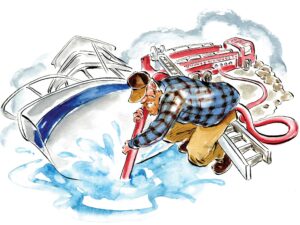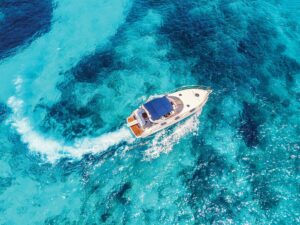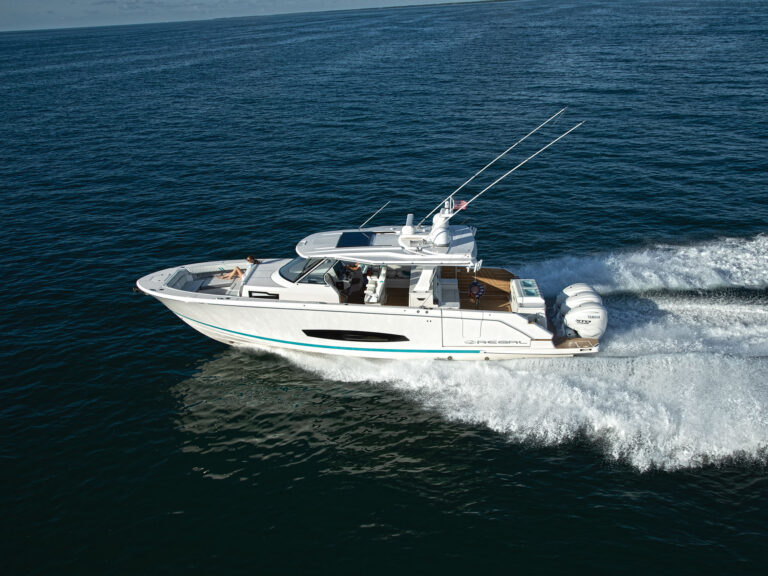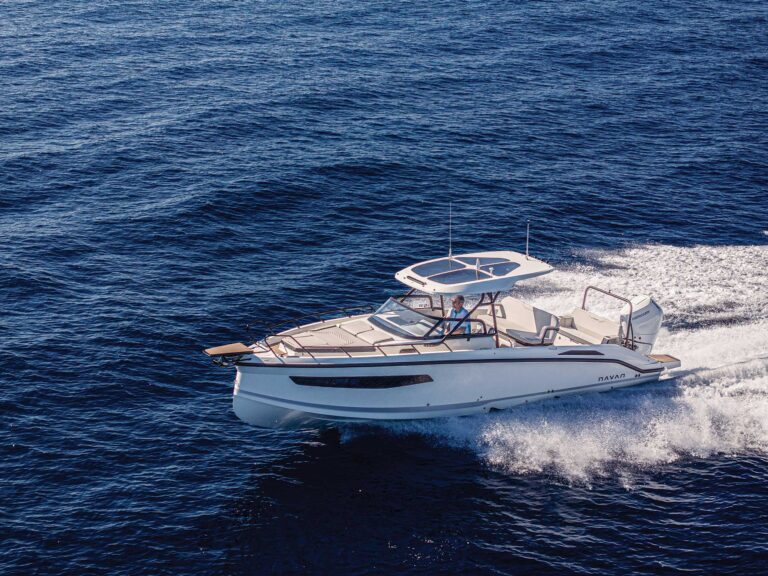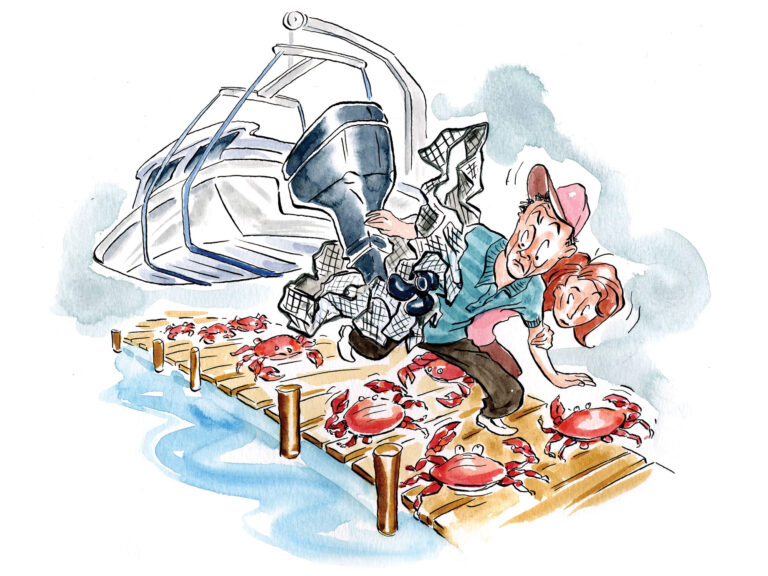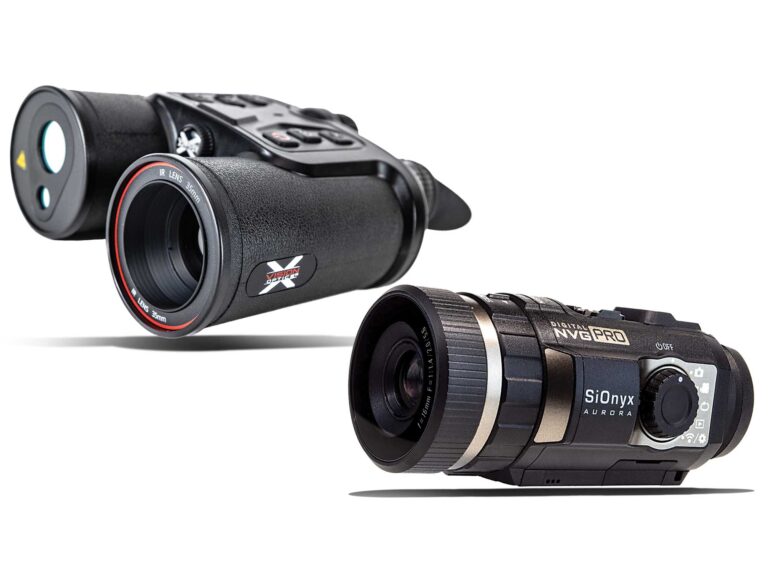Like any subject, docking a boat can be broken down into smaller bits to gain greater understanding of the process. Let’s examine prop torque. Grasp the concept of prop torque, practice its application, and you’ll come in with élan more often. Prop torque allows you to fine-tune the boat’s position while staying within the boundaries of your slip, basically maneuvering at a standstill before reaching for the lines. Using prop torque, you can make your boat cant, slide and shift without moving forward or back much. Its effect is subtle — you have to wait a beat for the boat to react (probably the best boat-handling advice of all). It’s not a critical seamanship skill, but it engenders pride in the doer and admiration from the onlooker. Not a bad deal.
Much is written on why a prop generates torque. Suffice it to say that most singleengine boats have propellers that turn clockwise, or right-handed. A right-handed prop tends to make the bow move to the left (port) and the stern to the right (starboard) when going forward . In reverse, the effect is reversed: the bow tends to starboard and stern tends to port.
Step one is to take your boat out and, with a straight helm, put the engine in reverse at idle speed. The stern will kick to port. On some boats the kick is more pronounced than others. Apply more throttle and the motion, or moment, is increased: The stern kicks faster. The effect is strengthened with the drive trimmed under. Practice to determine the extent to which prop torque makes your boat’s stern “kick” in reverse and get used to it at a variety of throttle and trim settings. That’s the first thing I was taught when I had a summer job running a single inboard yacht club launch as a kid. The directional thrust provided by a stern-drive or outboard lets you enhance the effect by turning the propeller and directing the thrust. Remember that whatever direction the stern swings, the bow moves in the opposite direction.
Now, put it into play. Say you tie up bow-to. Make your life easy and, just before your bow gets between the poles, aim for a point at the head of the slip on the port side.
This will have you canted to the orientation of the slip with the bow towards the left forward corner and the stern toward the right aft corner. You are approaching somewhat cockeyed because of what you learned in your practice sessions: When reverse power is applied, the stern will kick to port, the bow to starboard, and you’ll come to a stop perfectly parallel. Stopping becomes a vector; instead of just changing speed, you changed direction as well. Had you come in parallel and hit reverse, you’d have kicked the stern into the dock and the bow away — possibly into the neighboring boat.
Backing into your slip, prop torque can be used to equal advantage. We’ve all seen a fellow boater halfway into his slip trying to use the wheel to steer a boat “around a corner” in reverse. Since boats steer from the back, that causes the boat to get sideways to the intended direction. Positioned slightly off-center of the target, keep the helm centered and apply reverse. Once again, your prop torque will move the stern to port. When the transom is lined up, shift into neutral, let things settle for a beat, then shift into forward, using prop torque to induce a starboard slide, just enough to get the bow to straighten out. Reverse again. You’re home.
Docking articles make it sound so easy. The key is understanding the forces in play and working with them in concert. Prop torque is one piece of the puzzle.
For more prop torque tips, check out How to Use Prop Torque.

